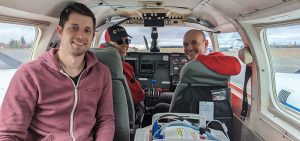
@news.gov.bc.ca
BRITISH COLUMBIA – People and communities can look forward to more freely accessible high-quality data to support informed and effective decision-making on climate resiliency and land-use planning as the LidarBC program is now underway.
Light detection and ranging (LiDAR) data can be used to help communities plan for and respond to climate emergencies, support habitat and ecosystem protection and inform sustainable forestry management.
“BC covers almost a million square kilometres and almost none of it is properly mapped and understood. Working with First Nations, industry and other interest groups, BC is taking action to map every corner of the province,” said Nathan Cullen, Minister of Water, Land and Resource Stewardship. “By providing freely available LiDAR data, our province will be able to better adapt to climate change, make more and better decisions to protect old growth and give Indigenous partners and industry the data they need to create more jobs.”
LiDAR is a modern survey method that employs a laser-based aerial remote-sensing technology to map the Earth’s surface by measuring distances. It has been around since the 1970s, but with technological advancements and commercialization, it has become a more cost-effective and feasible method of data collection in recent years.
High-resolution mapping derived from LiDAR is crucial information in a number of fields, such as forestry, wildfire and fuels, surface hydrology, agriculture, ecology, wildlife, habitat management and restoration, geology and geomorphology.
BC has signed a contract with Kîsik Geospatial and Aerial Survey (Kîsik) to collect LiDAR elevation data. This process delivers highly detailed and accurate three-dimensional mappings of landscapes for all of BC.
The Province makes a large collection of LiDAR data that accounts for 14% of B.C.’s landscape free and equally accessible to everyone on the LidarBC website. New LiDAR data sourced from Kîsik will significantly update the Province’s digital models of landscapes that are based on aerial imagery taken 30 years ago, and will include detailed representations of forests, buildings and other infrastructure.
“On behalf of Kîsik Aerial Survey, we are excited and proud to be a part of this ambitious program. Over the last 13 years, Kîsik, a B.C.-based company, has flown tens of thousands of hours above B.C.’s rugged terrain collecting high-quality airborne sensor data. Our seasoned team is honoured to put their experience to work on such an important project for the future of our province,” said Thomas Dionne, general manager, Kîsik Geospatial and Aerial Survey.
Kîsik is using two aircraft that will cover 950,000 square kilometres to gather data. and has been actively collecting LiDAR data for the Province for a month. In that time, Kîsik has acquired LiDAR data for 1.7% (16,000 square kilometres) of BC’s land base.
The program will initially concentrate on gathering data for rural areas and other areas of the Province that are not currently represented in the LidarBC database.

